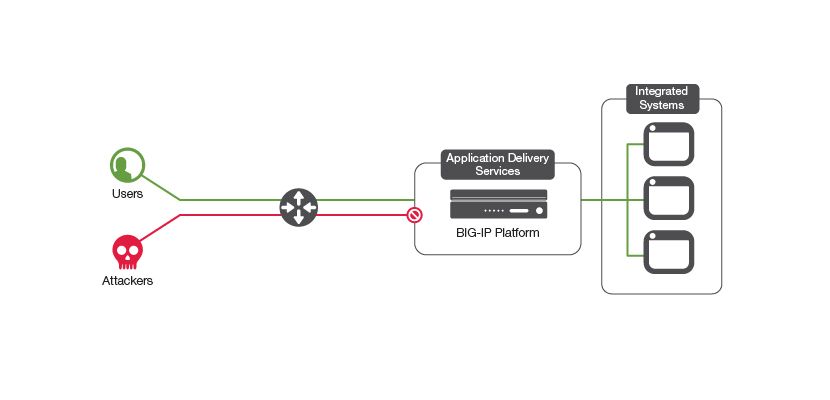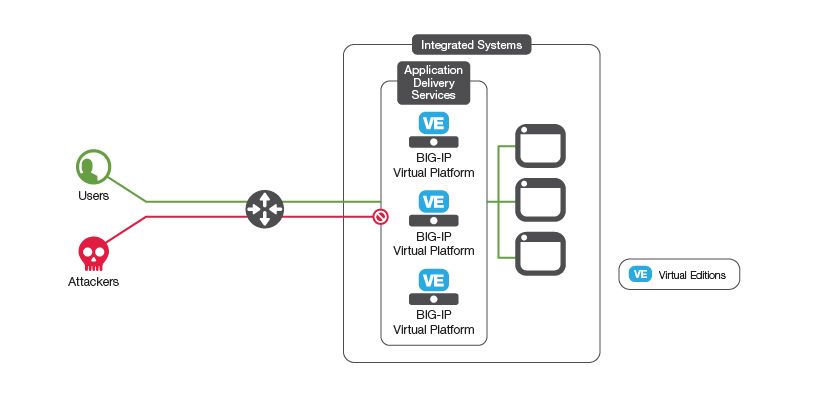Integrated systems are a popular enterprise architecture choice because of the promise of fast deployment, simplified management, and efficient operations. Integrated systems combine preconfigured computing, switching and routing, and storage along with hypervisor and management software.
Today, hyperconverged offerings such as Nutanix and SimpliVity have increased virtualization of the infrastructure to include storage and networking. These solutions can offer increased cost savings and greater flexibility.
However, the evolution of these architectures hasn’t changed the fundamental nature of the applications they run. Applications still require layer 4-7 application services. And you’ll to need to supply them on top of your converged or integrated systems.
The challenge is to find the best way to integrate application services into these new architectures.
With technology partnerships across many infrastructure and virtualization suppliers, F5 can help you deliver the security, availability, and optimize your applications need.
Now, you have some choices to make.
First, software.
Virtual editions are the most common deployment choice for converged and hyperconverged infrastructures. Using virtual editions lets you deliver application services within the converged infrastructure. Locating services and applications on the same infrastructure can simplify networking and avoid extra network hops.
You can deploy virtual editions on a per application basis, simplifying the overall stack for a single application and making it more portable across infrastructures. You can also use the same deployment and provisioning for both application servers and virtual editions, simplifying operations.
What about hardware?
Adding hardware appliances to a preconfigured hardware solution might seem counterintuitive, but sometimes it’s a logical choice. When high performance is a requirement (bulk SSL inspection or DDoS mitigation, for example), custom hardware offers performance and scalability.
The downside? When services are required at multiple logical layers within an infrastructure stack (such as managing traffic between front end presentation and middleware business logic) application traffic will have to leave the converged infrastructure blocks to be processed. This adds additional network hops and increases latency.
You could also deploy a ‘two tier’ solution with high-capacity hardware at the edge for bulk services (SSL inspection, firewalling, optimization) and single-tenant virtual editions providing specialized services (web application firewalling or virtual desktop access) for specific applications within the integrated virtual infrastructure.
F5 lets you scale-up or out. Scaling up works well to scale a single application or when you have multiple services that have been consolidated onto a high-capacity hardware device. Scaling out, by configuring more appliances, is a great way to manage more applications and gain increased flexibility.
Your choice of converged or hyperconverged infrastructure, platform, and scaling model will dictate your next steps.
Virtual appliances are easy to deploy into an integrated system. Just deploy the image (the image and the deployment method are hypervisor- and system-dependent), using the hypervisor virtual switch technology to expose the networks required, and then license the appliance.
For hardware appliances, make sure there’s high-performance connectivity from the device to all networks you want app delivery services on. Using multiple high-capacity trunks into the switch fabric enables network traffic from applications running within the system to be managed by the BIG-IP or VIPRION platform. Ensure traffic from all relevant VLANs is exposed to the platform so services can be inserted wherever they’re needed.
With a running platform connected to the desired networks, it’s time to configure application services. For simplified management and robust, repeatable deployments, use an iApp template when possible.
iApp templates turn deployment best practices for specific applications into simple wizards, so you only have to supply site-specific information, such as IP addressing. There are over twenty F5-supported, fully customizable templates, covering many common applications. The templates can also be API driven, allowing management systems to create blueprinted deployments with a few simple REST calls.


The applications running in your integrated systems are optimized by the security, performance, and availability delivered by F5 application services.